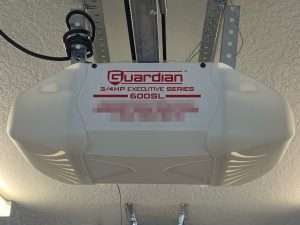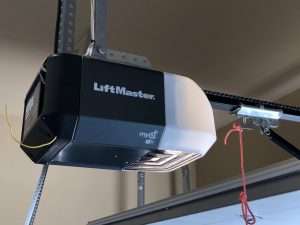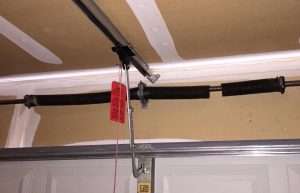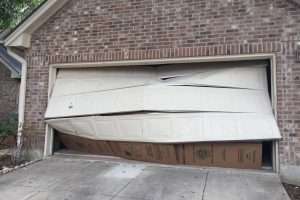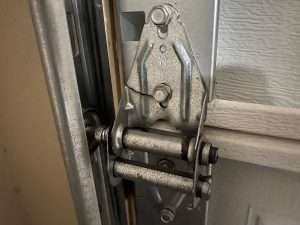Garage Door Won’t Close? Here’s Why
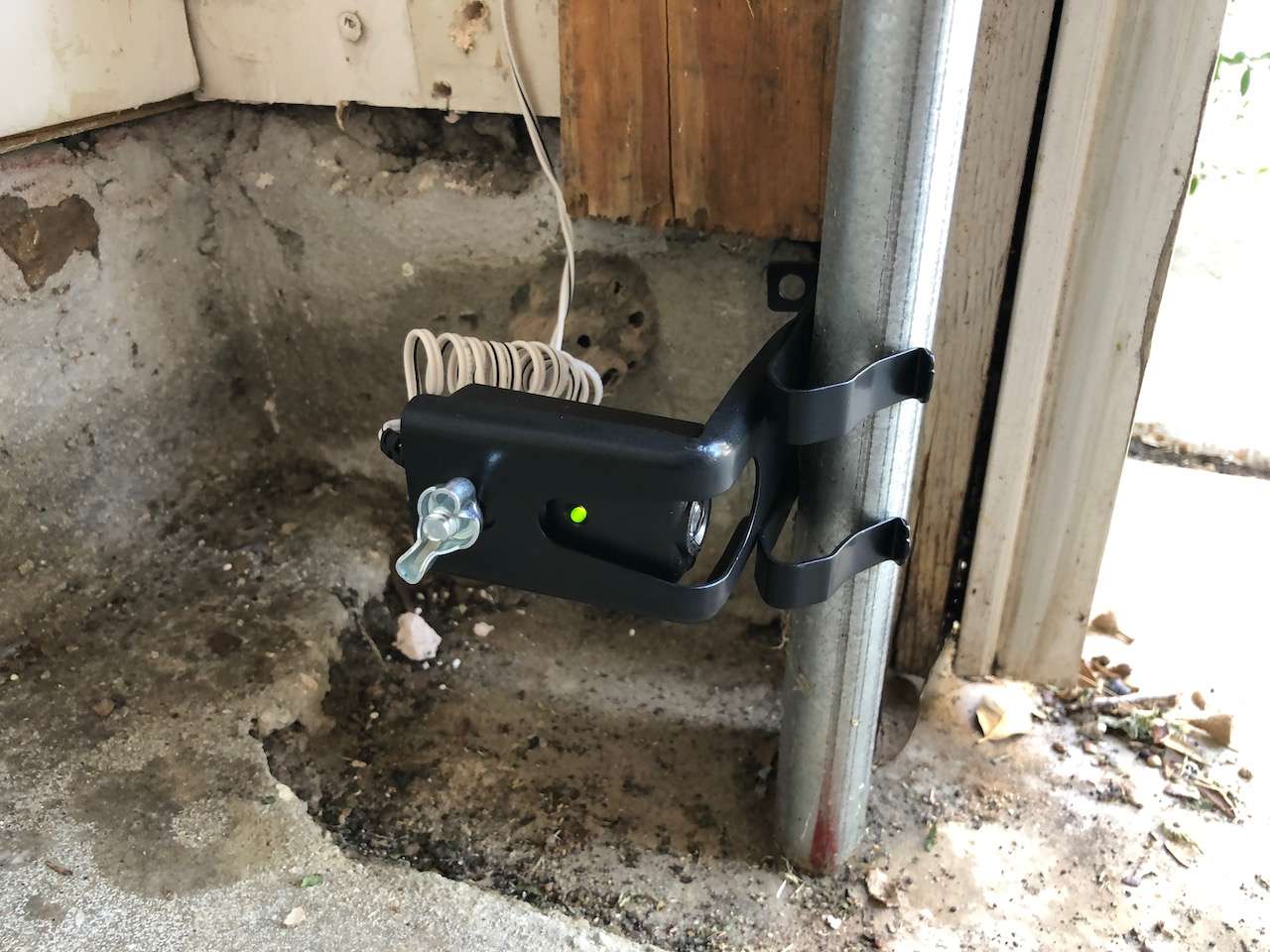
There is nothing more frustrating than when your garage door won’t close. If you have to press and hold the inside wall button to close the garage door, your safety sensors are misaligned or they may need to be replaced. If your garage door doesn’t close after aligning the safety sensors, you might need to replace them.
Automatic garage door openers manufactured after January 1st 1993 are required to have safety entrapment sensors. Safety sensors are mounted at the bottom of your garage door tracks about six inches off the ground and shoot an invisible beam across the opening of your garage door.
They are only active on the down cycle and will make the automatic opener reverse and go back up if something crosses the beam. Some brands of garage door openers will flash the light bulb ten times to tell you there is an issue with the sensors. That changed on newer models in 2022 manufactured by the Chamberlain Group.
Why Is My Garage Door Not Closing and Blinking?
Light Bulb Blinks Ten Times
If the light bulb blinks ten times on your garage door opener, you most likely have a Chamberlain, LiftMaster, or Craftsman garage door opener manufactured before 2022. This was a diagnostic feature built in to signal there was an obstruction, misalignment, or broken wire on the sensors. This feature has since been removed due to 2022 LiftMaster product changes that were implemented.
Safety Sensors are Obstructed

Garage door opener safety sensors can go bad due to age, excess sun or water exposure, or from physical damage caused by lawn tools, bicycles, and trash cans that have been repeatedly hitting the sensors. Different brands of garage door openers will act differently if the safety sensors are misaligned or going out, but most garage door opener light bulbs will blink, or the circuit board will click.
The most common problem with safety sensors is they are usually knocked out of alignment or there is something in the way, preventing the sensors from making a connection. First thing is to check to make sure nothing is blocking the sensors, and they are aligned across the opening of the garage door, shooting at each other. Something as simple as a leaf or spider web can block sensors and prevent an automatic opener from closing.
The second most common issue is the sending sensor can get weak over time, and it won’t be strong enough to send the signal over to the receiving sensor. This is most common with double car garage doors due to the width of the opening. When this happens you will have constant intermittent issues with closing your garage door, which can be very annoying.
Moreover, it makes aligning the sensors much harder because the signal is weak. The lights on the sensors will be on, but that doesn’t always mean you have a strong connection. Replacing the safety sensors is your best option.
Safety Sensors are Misaligned

The most common problem with garage door openers is safety sensor misalignment. Safety sensors sit about six inches off the ground by the garage door tracks and are always getting hit or obstructed in a busy home. If the sending sensor is slightly off, it can cause the connection with the receiving sensor to be off by several inches over the span of a 16-foot wide garage door.
Even though you see lights on your safety sensors, it does not mean they are aligned properly. If one of the sensors gets bumped or hit slightly out of alignment, it could cause intermittent issues closing your garage door. One of the lights could appear to be solid, but in reality it might be barely flickering, meaning the sensors are not making a good connection.
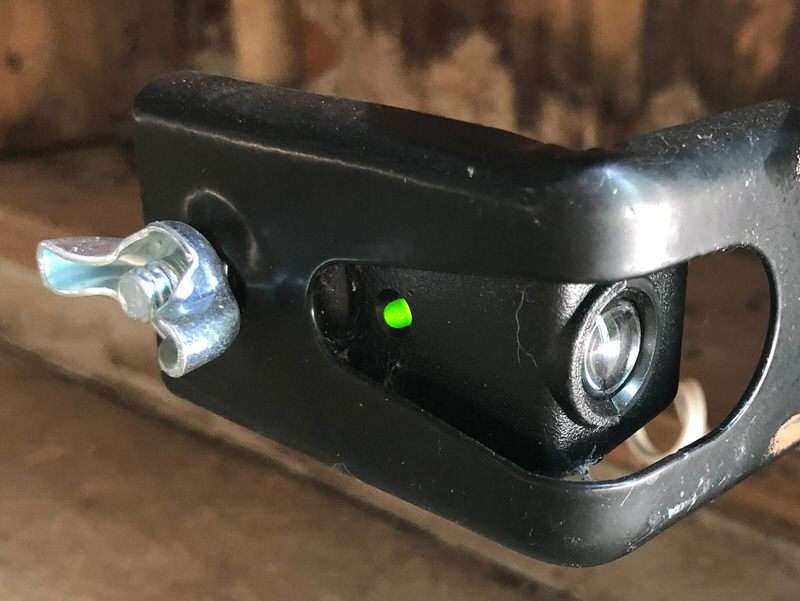
Chamberlain, LiftMaster, and Sears Craftsman garage door openers manufactured after 1997 have an amber sensor light on the sending sensor and a green light on the receiving sensor. When the sensors are misaligned, the green light will be off. If they are slightly misaligned, the green receiving sensor light could be slightly flickering if you take a closer look at it. If that is the case, they will need to be aligned properly or possibly replaced.
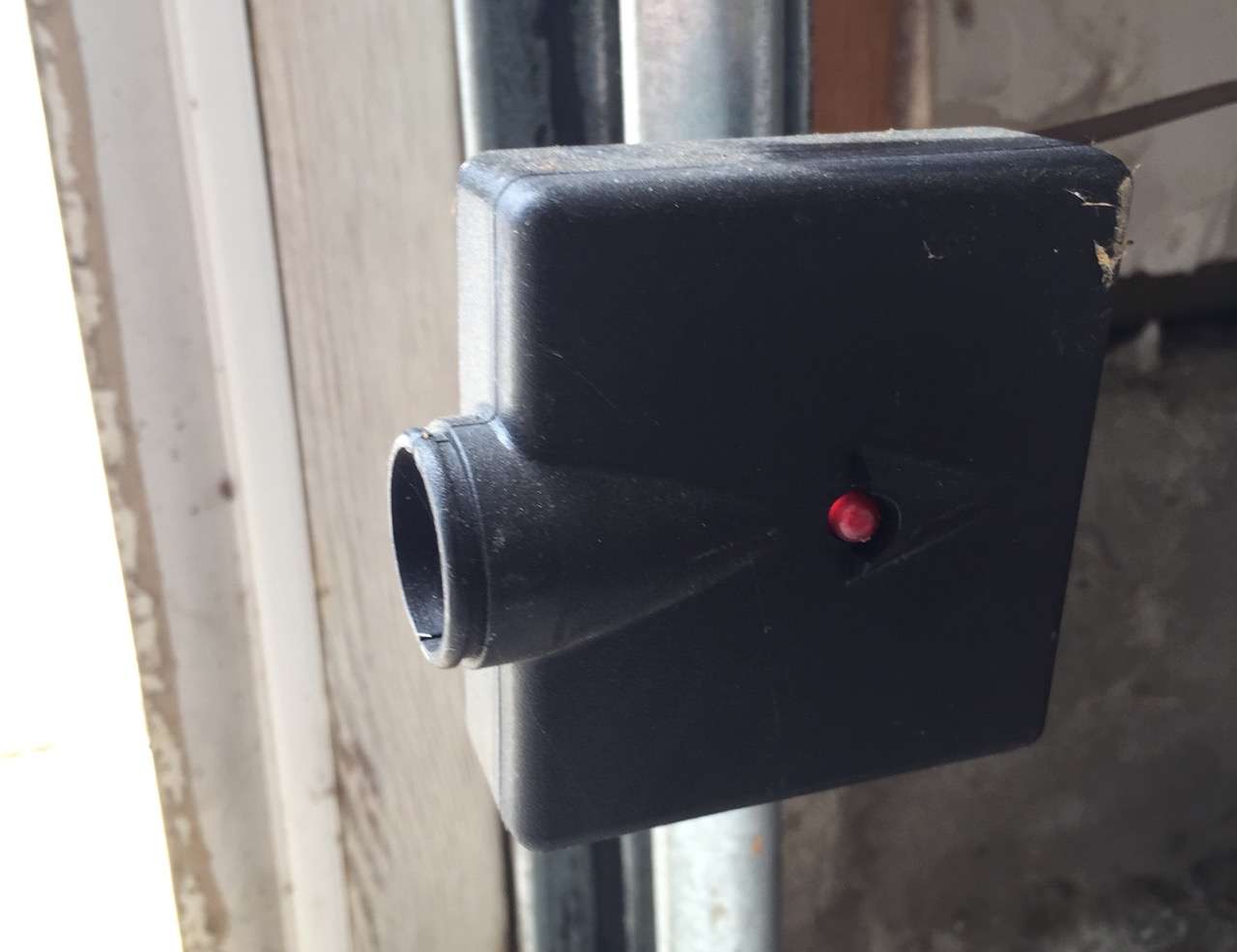
Genie garage door openers use a green light for the sending sensor and a red light for the receiving sensor. When Genie safety sensors are misaligned, the red receiving sensor light will blink. This is a nice feature because if the light is blinking, then you know you have power going to the receiving sensor, all you have to do is align them properly.
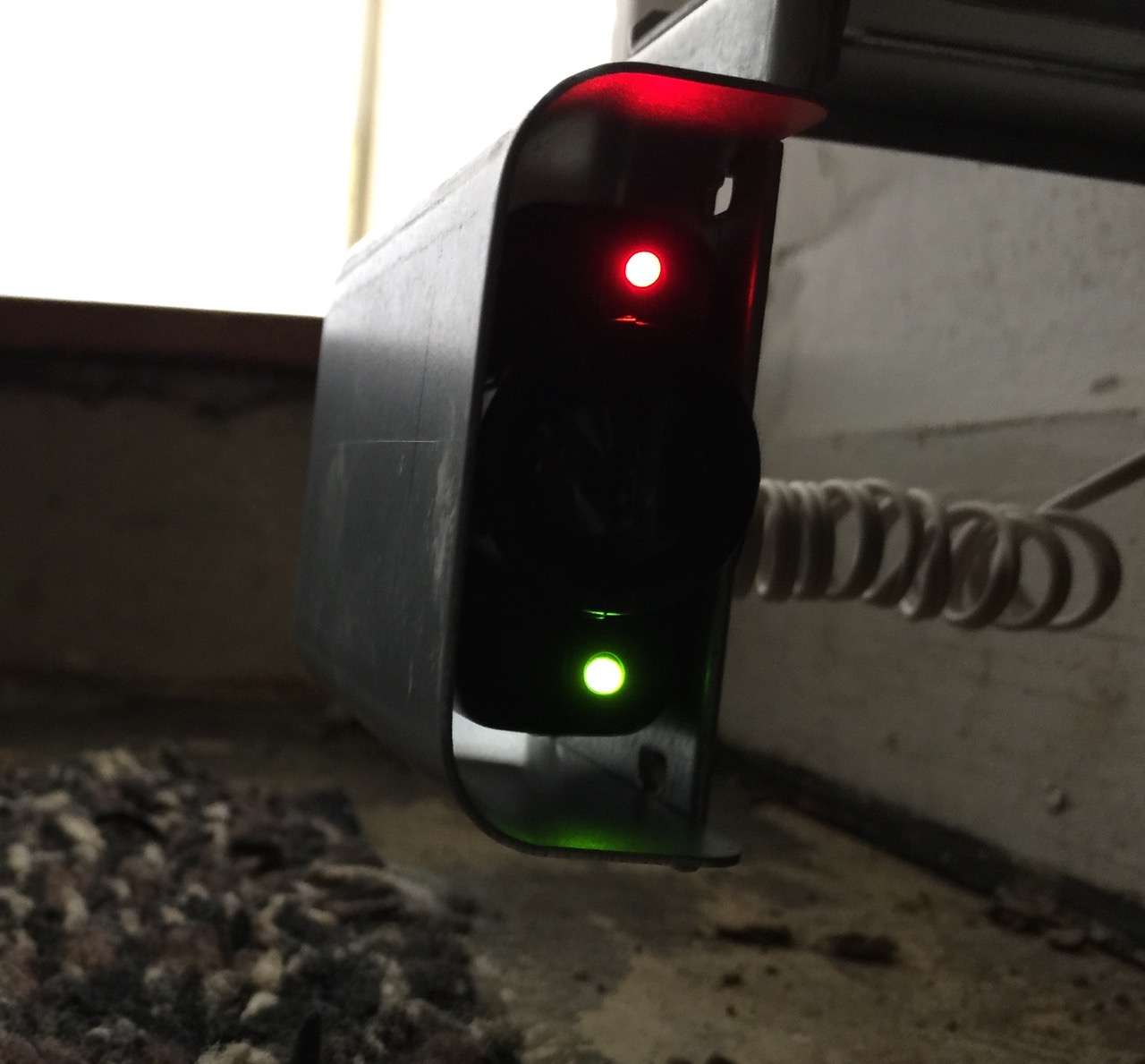
Linear garage door openers have a green light on the sending sensor and a green and red light on the receiving sensor. The green lights let you know there is power going to the sensors. The red light on the receiving sensor glows bright red when the sensors are aligned properly. Linear safety sensors can rotate on the sensor brackets, so if you don’t see a red light, try rotating the sending or receiving sensor until the red light comes on.
Garage Door Won’t Close and Sensors Are Aligned?
If your garage door doesn’t close and the safety sensors are aligned, take a closer look at the lights on the sensors. Many times, from a distance, they look to be solid, but if you get down on your hands and knees you will notice one may be lightly flickering. If this is the case, try better aligning the sensors.
Safety Sensors Are Getting Weak
Every garage door opener is equipped with a sending sensor and a receiving sensor. The sending sensor shoots out an invisible beam which needs to make a connection with the receiving sensor to complete the circuit which allows the garage door opener to close. These sensors are only active on the down cycle and have no effect on a garage door opener when it is going up.
The most common double car garage door is 16 or 18 feet wide. Over time, the sending sensor can get weak, making it harder to align the safety sensors over a large span. If you feel this is your problem, you need to replace the pair of safety sensors as they have circuit boards inside like the motor head. These circuit boards can get weak over time, causing intermittent issues when closing the garage door.
Safety Sensor Wire Could be Damaged
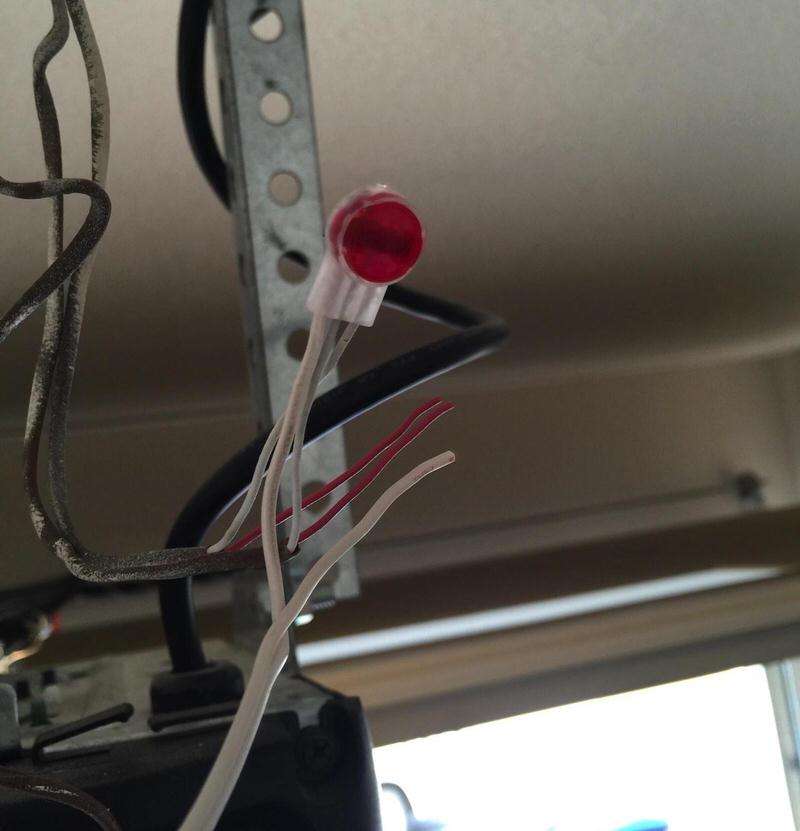
It is very common for safety sensor wiring to get damaged where they are mounted about six inches off the ground. Many people store shovels, rakes, trash cans, and anything else they can fit in the front corners of their garage which usually gets caught on the sensor wiring causing damage. If you are having issues, check to make sure this wire is intact and does not have any areas where you see broken wires.
Chamberlain, LiftMaster, and Sears Craftsman garage door openers manufactured after 1997 will have an amber or yellow light on the sending safety sensor. The light on the sending sensor should always be on, even if the sensors are not aligned properly. If this light is not on, there is a damaged wire somewhere or the wires going into the back of the circuit board at the motor head have come loose.
Chamberlain, LiftMaster, and Craftsman openers have polarity wiring, so you need to make sure to keep the black and white wires lined up properly for the safety sensors to work properly. If the sending sensor is not working properly, the green light on the receiving sensor will remain off. It only comes on when the sending sensor is making the proper connection.
Genie garage door openers have a green light on the sending sensor. This light should always be on unless it is not getting power. If the green light is off, check the wiring at the sensor and up at the motor head to make sure there is a good connection. Genie is non-polarity wiring, so you don’t have to match up white and black on the wiring.
The wiring at the motor head can break over time due to vibration. Genie does things a little differently on the receiving sensor by making the red light blink if not properly aligned. By making the light blink, they have provided a built-in diagnosis that lets you know alignment is off, but there is power going to the sensor.
Linear garage door openers are simple. There should be a green light shining on both safety sensors. If you don’t see a green light on one side, there is no power going to the sensor. This is when you will want to check wiring connections at the sensors and the motor head. Linear is non-polarity, so it does not matter which wire is connected to the other. You don’t have to keep them matched up.
When the sensors are aligned properly, a red light will be shining on one safety sensor, letting you know they are aligned properly. There is one instance where the sensor lights may not be shining at all, and that is if you have one of Linear’s newer garage door openers with a DC motor. The newer openers will go into a low-power mode to save energy, and the safety sensor lights will turn off. You will need to run the unit to get them to come back on.
If your house is pre-wired, you might have to remove the cover plate on the wall, so you can access the safety sensor wiring connection for the garage door opener. This wiring is low voltage, so you can work on it while the opener is plugged in without any issues. Grab the connection point and wiggle it to see if your sensor lights come on. If that doesn’t work, try making new connections on the wires and use electrical tape to keep wires separated, so they don’t touch.
How to Fix a Garage Door That Won’t Close
Check Wiring Connections at Motor Head
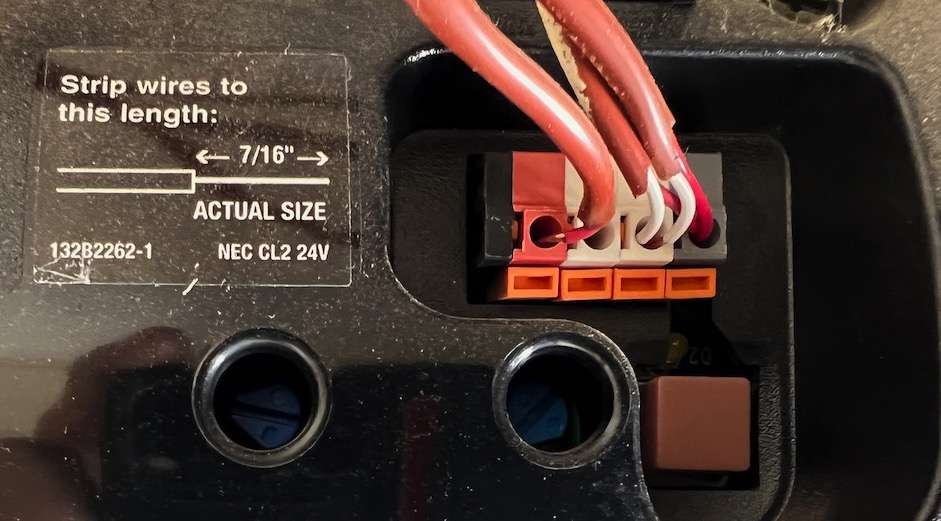
Most garage door openers will have two pairs of wires for the safety sensors going into the terminals on the motor. If your garage door opener is not closing, it could be a loose safety sensor wire at the motor head where the wires are connected to the circuit board.
Many garage door openers have spring-loaded clips that clamp down on the wire. We have seen on many occasions where one of the wires is loose because the installer didn’t twist the wires together. Remove the wires, twist them together, and reinsert them back into the same hole. This remedy has worked for us many times and it may resolve your issue.
Lastly, make sure not to strip back the wire insulation too far. We have seen occasionally where two exposed wires were touching, causing the garage door opener to have open and close issues. Small issues like these are caused by a careless installation.
Garage Door Won’t Close All the Way and Goes Back Up
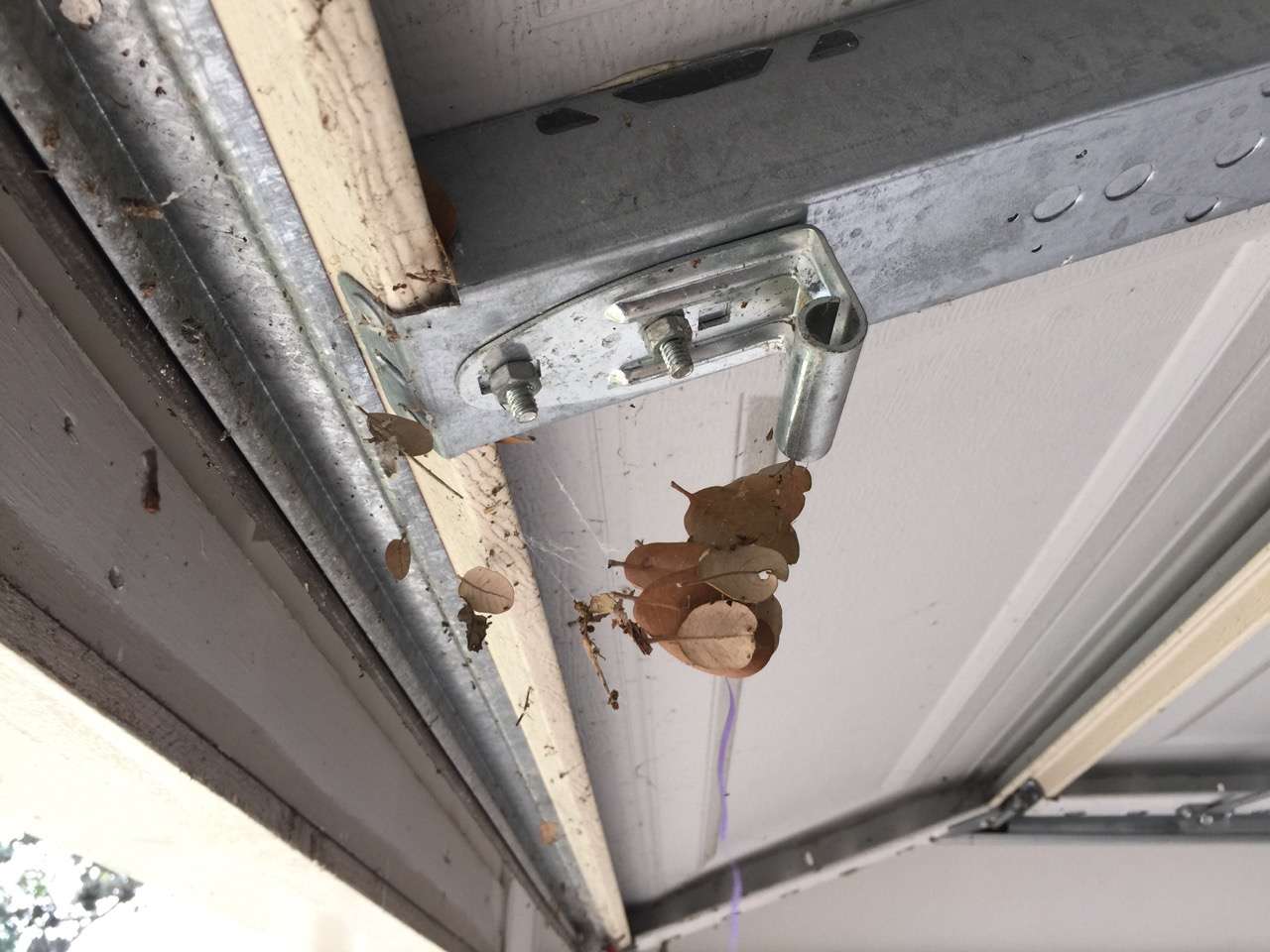
If your garage door goes all the way down like it’s going to close and reverses at the last minute, you most likely have something hanging off the bottom section of your garage door. Visually inspect your bottom garage door section to make sure there aren’t any leaves, spider webs, or anything else hanging off the bottom. If so, these items could be breaking the sensor beam while it’s trying to close.
If your garage door is going all the way down, hitting the concrete, and opening back up again, then you are having issues with the travel limits on your garage door opener. The down limit on your opener will need to be adjusted, so the unit stops right at the concrete. This adjustment may be electronic or manual, depending on the type of opener you have.
Garage Door Won’t Close When It’s Cold
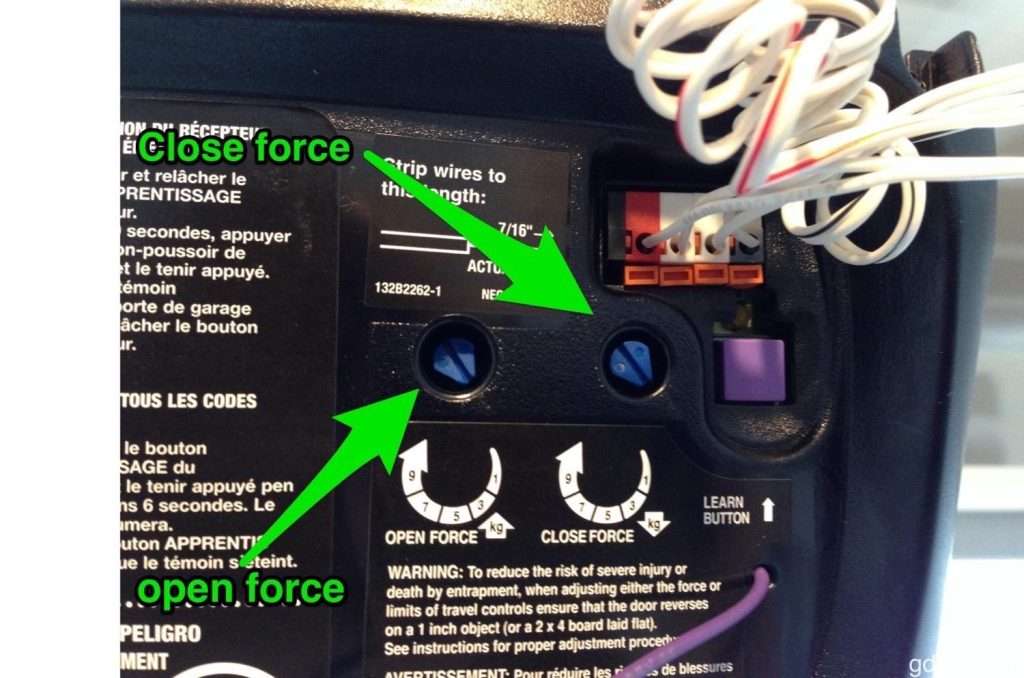
If your garage door doesn’t close when it’s cold outside, you are most likely having issues with the force adjustment. For many years, garage door openers had manual force adjustment dials that would allow you to adjust how hard the opener will push and pull the door during operation.
When it’s cold outside, all the grease, oil, and metal on your garage door tightens up, which causes additional resistance for your automatic opener. You may need to increase the “down force” on your opener, so it pushes harder to close your garage door. This is usually the issue with openers 99% of the time when it gets icy outside.
The Sun is Shining on the Wrong Safety Sensor
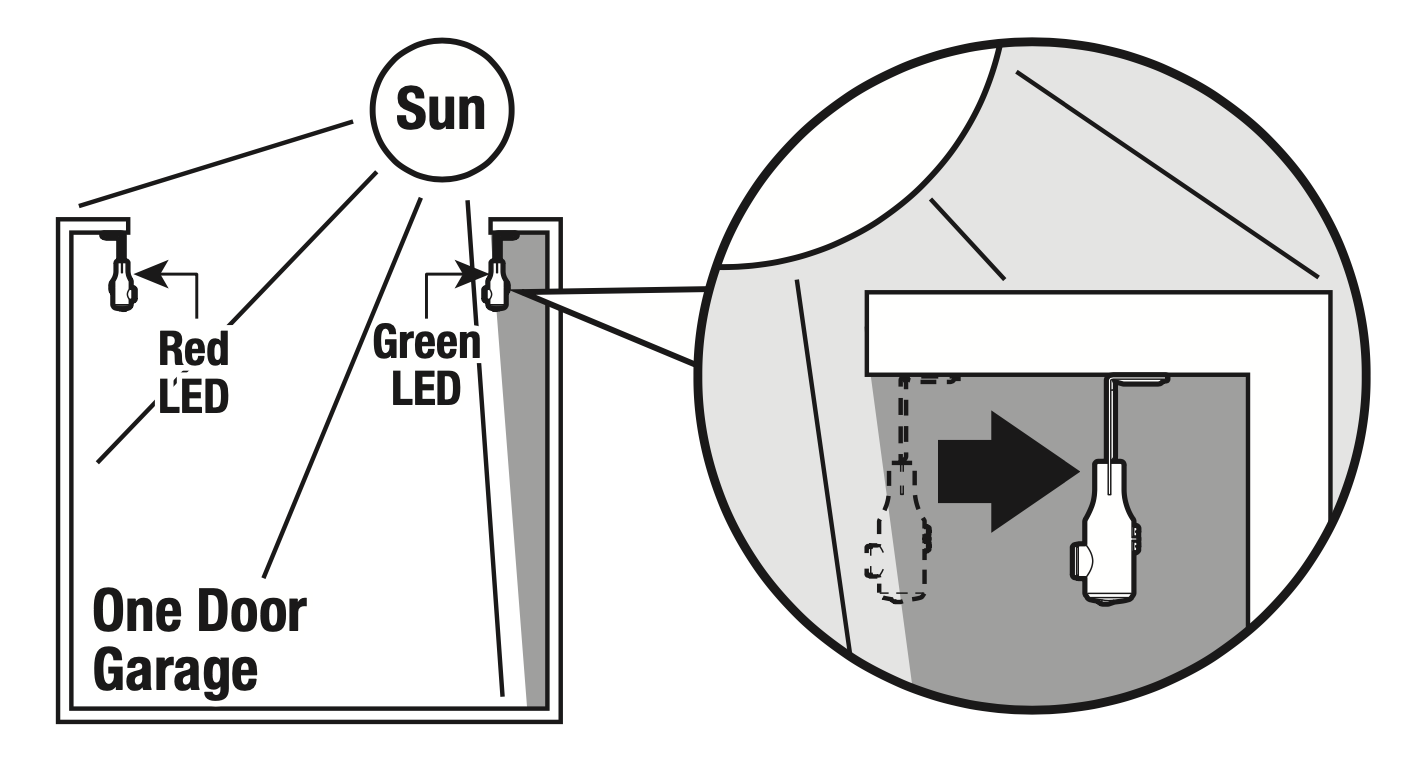
If you are having issues closing your garage door when there is a lot of sunlight shining into the garage, you might need to check to see which safety sensor is in the sunlight. Sunlight can cause interference with garage door opener safety sensors, preventing your garage door from closing. If sunlight is shining on both sensors, you can move them further back like pictured in the diagram above to get them out of direct sunlight and reduce interference.
Garage door opener manufacturers state in the owner’s manual that either the sending or receiving sensor needs to be in the sun, and this varies by manufacturer.
Safety sensor orientation by brand should be as follows:
- Chamberlain/LiftMaster/Sears sending sensor in the sun (amber light)
- Genie receiving sensor in the sun (red light)
- Linear sending sensor in the sun (green light only)
- Guardian TX-Sender in the sun (green light)
- Marantec sending sensor in the sun (green light)
Safety Sensors Need to Be Installed Properly
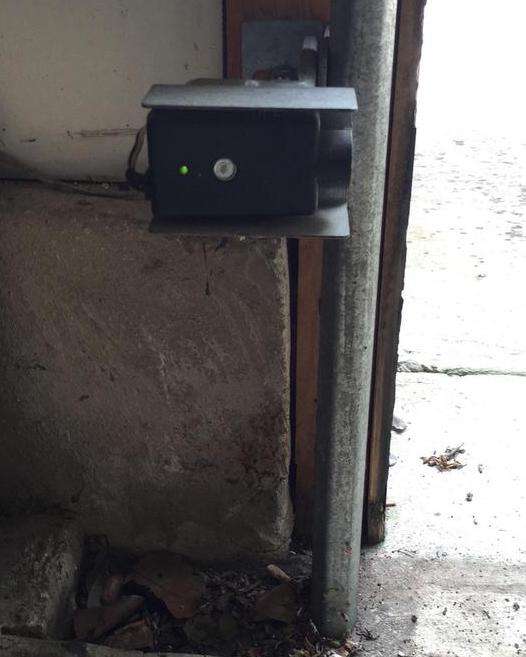
- 6 inches off ground
- the proper sensor in the sun
- aligned with track or behind to prevent hitting sensors
Safety sensors are supposed to be installed no higher than 6 inches off the ground. The reason for this is so the garage door opener sensors will detect a person who has fallen down and is laying in the opening of a garage door.
If you have multiple garage door openers, you need to make sure your safety sensors are installed correctly. There is a proper way to install the sending and receiving sensors, so there is no cross talk or interference between two different garage door openers.
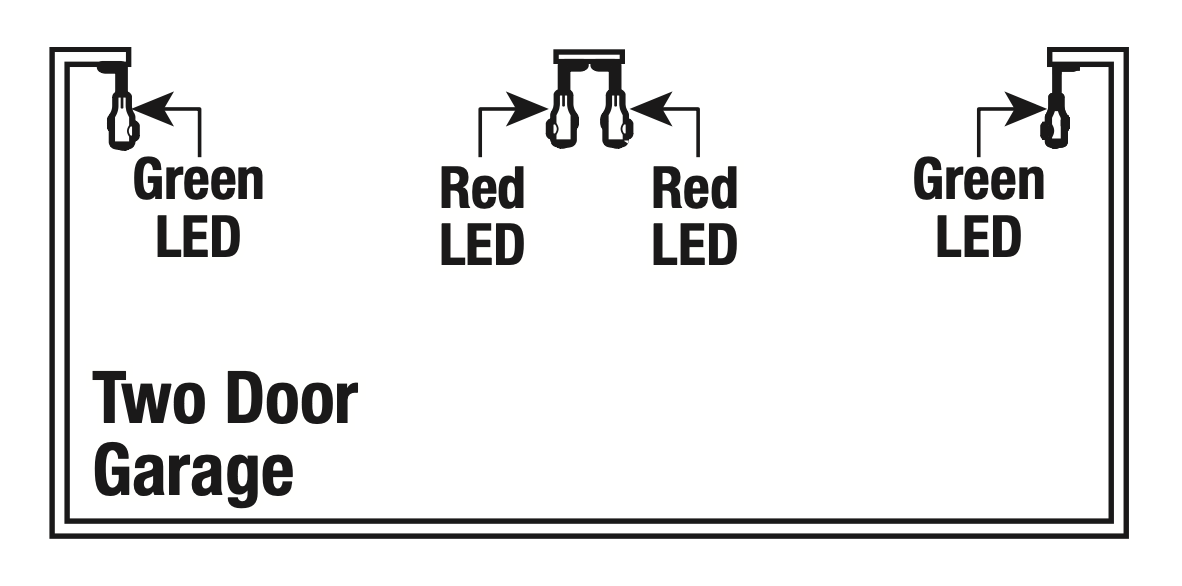
For example, if you have two garage door openers, which is very common, you need to make sure the sensors mounted in the center between the garage doors are the same. You can mount both sending sensors in the center, so they are shooting away from each other or both receiving sensors in the center.

If you have three garage doors, the orientation for the safety sensors is a little different. Above is a diagram taken from a Genie garage door opener manual that shows how to install the safety sensors when you have three garage doors.
Snappy Brackets on Chamberlain and LiftMaster Garage Door Openers
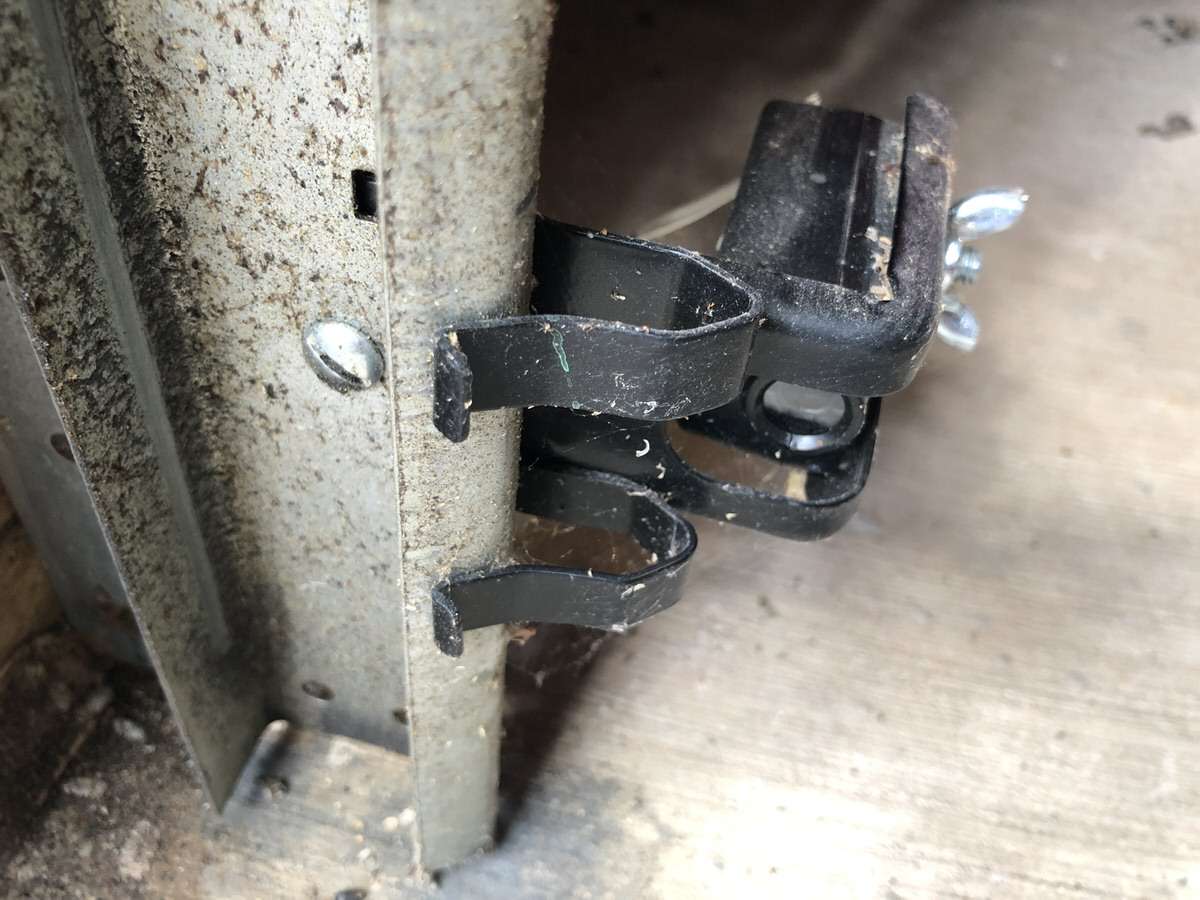
If you are having issues with trying to keep your safety sensors aligned on your Chamberlain, LiftMaster, or Craftsman garage door opener, you may need to bolt the snap on brackets (snappy brackets) to the garage door track. These brands use a unique type of bracket that mounts to the garage door vertical track.
If they get bumped or hit, the bracket can move or come off the track, making it tough to reinstall or align. When mounting to the track, you will need a small carriage bolt with a flat, rounded head, so the roller can pass by the bolt. The head of the bolt will be on the inside of the track.
You will also need to make sure the vertical tracks are secure to the wall if your safety sensors are mounted to the vertical tracks. It is common for a garage door to go down ninety percent of the way and then reverse because the vertical tracks are loose, causing the sensors to misalign as the garage door closes. It is important to make sure your vertical garage door tracks are tight to the wall.
Safety Sensors are Not Designed to Get Wet
If you wash your garage floor or have a rogue sprinkler head spraying toward the garage door when it’s open, your safety sensors could get wet. Water can damage your safety sensors and cause them to malfunction. Most sensors are designed to keep moisture out and have a hard plastic exterior to protect them in case they are hit. Direct water exposure can be a problem since they are electronic devices with small circuit boards inside. If you feel your safety sensors got lots of exposure to water, try replacing them to remedy your issue.
Can I add Safety Sensors to an older Garage Door Opener?
No. If your garage door opener was manufactured before 1993, your system won’t have safety sensors. They were required to be equipped with all new garage door openers manufactured after Jan. 1st, 1993. This is a UL325 requirement for safety entrapment that prevents the garage door from closing on someone or something if the safety sensor beam is crossed during the closing cycle. Older garage door openers don’t have the terminals required on the circuit board to add safety sensors.
Wayne Dalton Garage Door Locked in Open Position
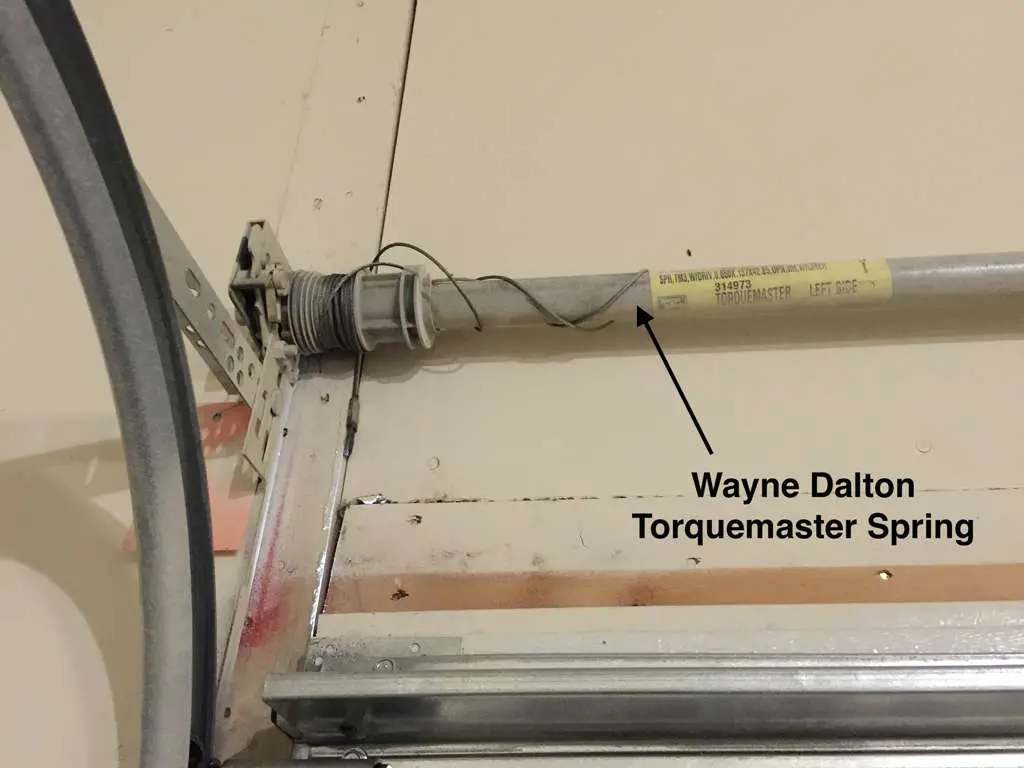
If you have a Wayne Dalton garage door with a Torquemaster spring, your garage door could be locked in the up position. The Torquemaster spring system is a tube that is mounted above your garage door, and it has small springs inside that life the weight of your door when opening and closing. When one of those springs breaks, the system will activate a lock which will make a clicking noise when opening.
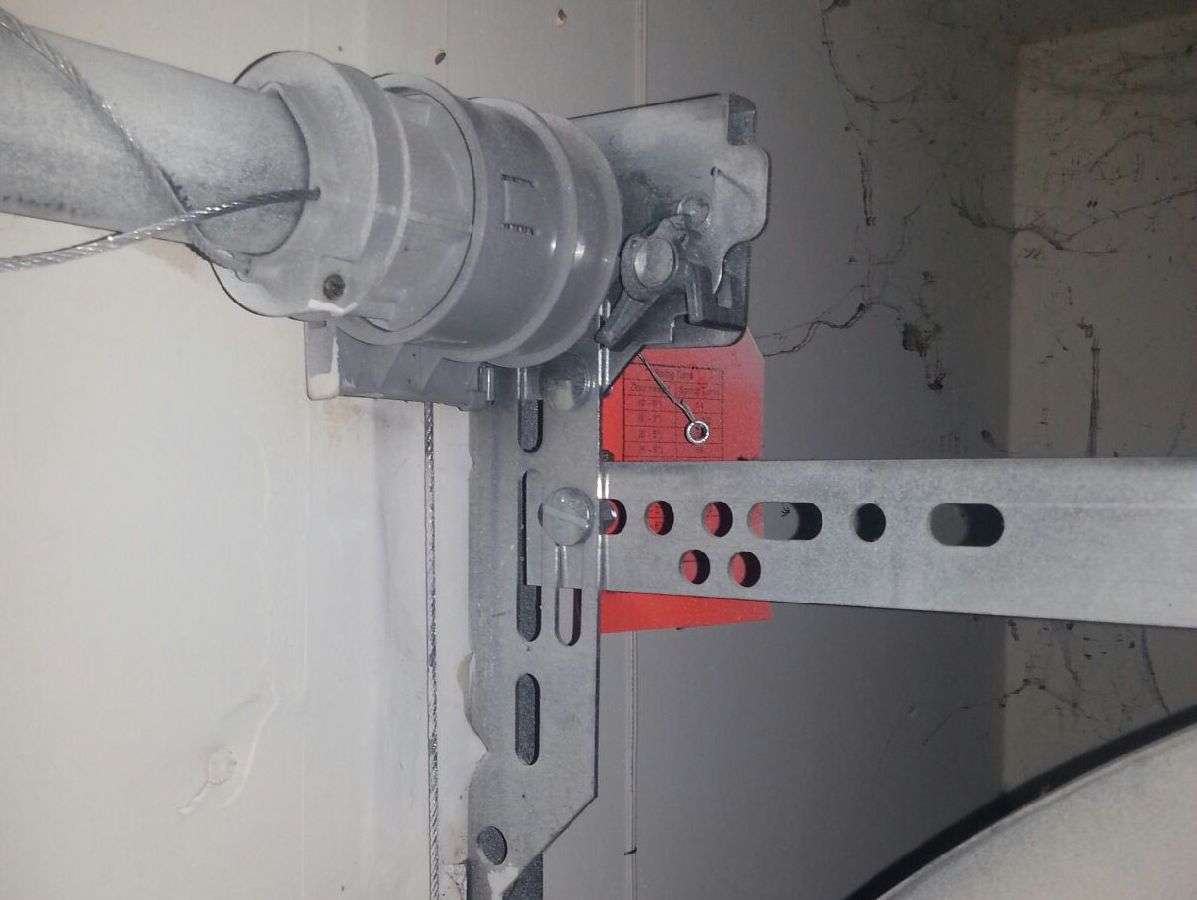
The clicking noise you hear is a lever that was activated when the spring broke to keep the garage door in the up position. When this happens, many homeowners will continue pressing the button on the wall to attempt to close the door. This can be a problem if the garage door opener pushes too hard and either damages the door or causes it to come off track. If this system looks similar to yours, this could be your issue. We discuss this issue in a little more detail in our Commons Signs of a Broken Spring article.
Still having issues closing your garage door?
It could be the down force adjustment on the garage door opener. Garage door openers are equipped with sensitivity/force adjustments that allow the unit to reverse if it comes in contact with something. The force adjustments are tied directly to the circuit board, and they can weaken over time.
You can increase the down force a notch or two, which will make the garage door opener apply more force when closing the garage door. The opener force needs to be tested monthly, and after any adjustments are made to the force. The owner’s manual for your garage door opener will illustrate how to perform this test.
If you have a Chamberlain, LiftMaster, or Craftsman garage door opener manufactured after 2011, it will have a yellow learn button. Next to the learn button will be an UP and DOWN arrow that will flash a diagnostic error code to let you know what issues you are encountering. This is a great feature that is not available on all opener brands.
Conclusion
Safety sensor issues cause countless headaches for homeowners all over the world. They have been required to be installed with all new garage door openers since 1993 to prevent accidental closures on people and pets. It’s important to educate yourself on how they function and operate, so you can prevent unnecessary service calls in the future.
